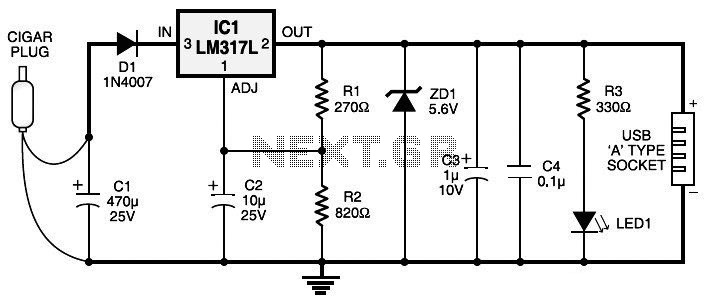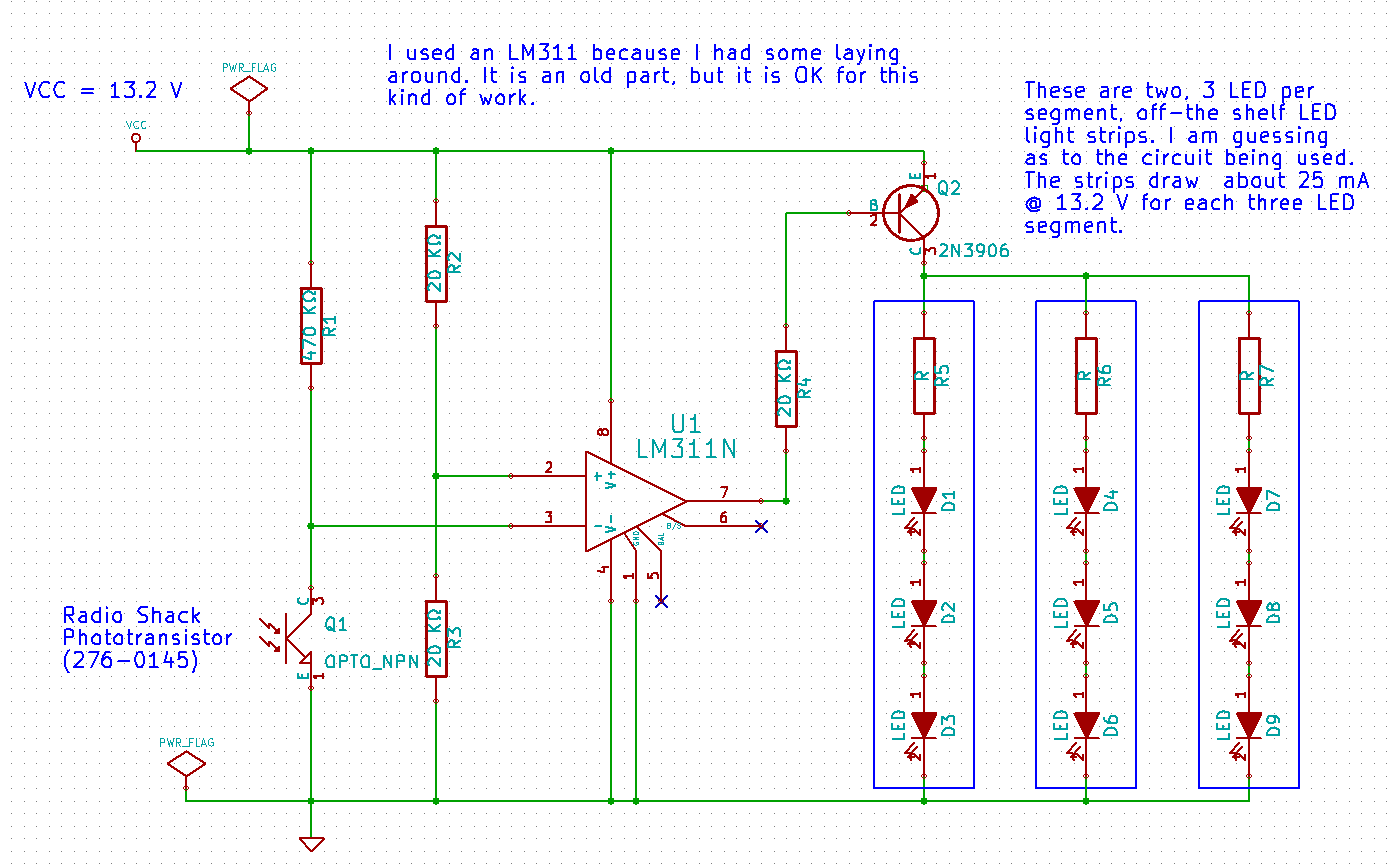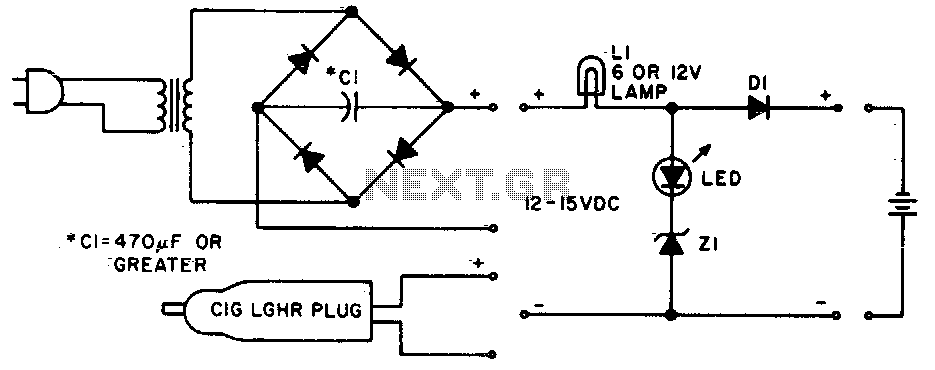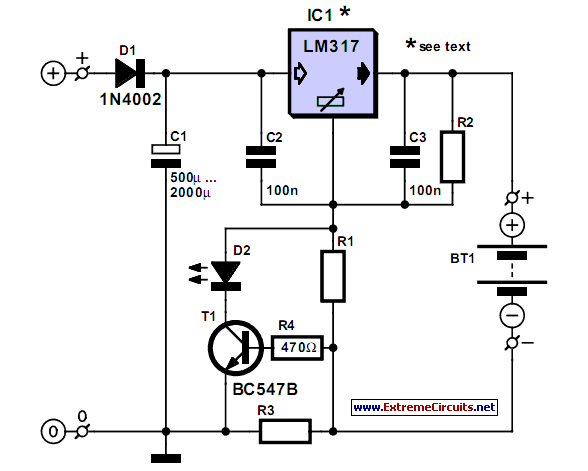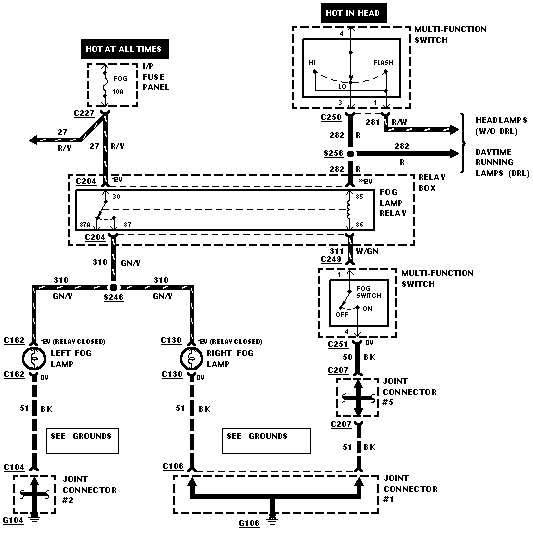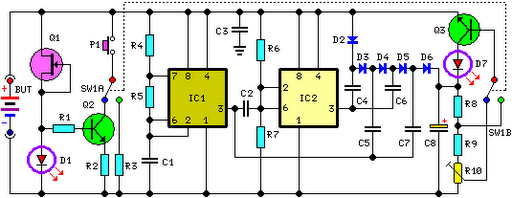
Emergency Light With Battery Charger
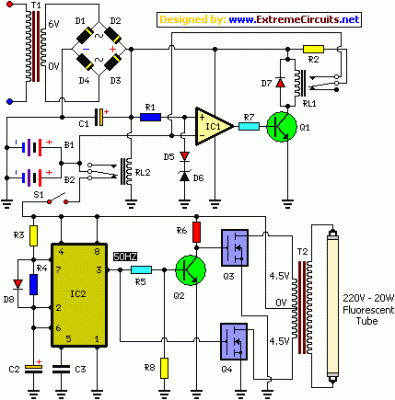
The following circuit illustrates an Emergency Light with a Battery Charger Circuit Diagram. Features include automatic activation of the light when mains power is available.
The Emergency Light with Battery Charger Circuit is designed to provide illumination during power outages while simultaneously ensuring that the battery remains charged when mains power is available. The circuit typically consists of a light-emitting diode (LED) or a compact fluorescent lamp (CFL) as the light source, a rechargeable battery, a charging circuit, and a control mechanism that automatically switches the light on when the mains power fails.
The primary components of the circuit include:
1. **Light Source**: An LED or CFL is utilized for its energy efficiency and long lifespan. The choice of light source will depend on the intended brightness and power consumption.
2. **Rechargeable Battery**: A sealed lead-acid (SLA) battery or lithium-ion battery is commonly used to store energy. The battery capacity should be selected based on the desired backup time and the power rating of the light source.
3. **Charging Circuit**: This circuit is responsible for charging the battery when mains power is available. It typically includes a transformer to step down the voltage, a rectifier to convert AC to DC, and a voltage regulator to ensure the battery is charged at the appropriate voltage level.
4. **Control Mechanism**: A relay or a transistor can be employed to switch the light on automatically when the mains power is lost. This mechanism detects the absence of mains voltage and activates the light source using the stored energy from the battery.
5. **Indicator LED**: An additional LED may be included to indicate the status of the circuit, such as whether the battery is charging or if the system is in emergency mode.
The circuit is designed to be compact and efficient, ensuring that the emergency light operates seamlessly during power interruptions, providing essential lighting for safety and convenience. Proper thermal management and component ratings are crucial to ensure reliability and longevity of the circuit during operation.The following circuit shows about Emergency Light With Battery Charger Circuit Diagram. Features:automatic switching-on of the light on mains .. 🔗 External reference
The Emergency Light with Battery Charger Circuit is designed to provide illumination during power outages while simultaneously ensuring that the battery remains charged when mains power is available. The circuit typically consists of a light-emitting diode (LED) or a compact fluorescent lamp (CFL) as the light source, a rechargeable battery, a charging circuit, and a control mechanism that automatically switches the light on when the mains power fails.
The primary components of the circuit include:
1. **Light Source**: An LED or CFL is utilized for its energy efficiency and long lifespan. The choice of light source will depend on the intended brightness and power consumption.
2. **Rechargeable Battery**: A sealed lead-acid (SLA) battery or lithium-ion battery is commonly used to store energy. The battery capacity should be selected based on the desired backup time and the power rating of the light source.
3. **Charging Circuit**: This circuit is responsible for charging the battery when mains power is available. It typically includes a transformer to step down the voltage, a rectifier to convert AC to DC, and a voltage regulator to ensure the battery is charged at the appropriate voltage level.
4. **Control Mechanism**: A relay or a transistor can be employed to switch the light on automatically when the mains power is lost. This mechanism detects the absence of mains voltage and activates the light source using the stored energy from the battery.
5. **Indicator LED**: An additional LED may be included to indicate the status of the circuit, such as whether the battery is charging or if the system is in emergency mode.
The circuit is designed to be compact and efficient, ensuring that the emergency light operates seamlessly during power interruptions, providing essential lighting for safety and convenience. Proper thermal management and component ratings are crucial to ensure reliability and longevity of the circuit during operation.The following circuit shows about Emergency Light With Battery Charger Circuit Diagram. Features:automatic switching-on of the light on mains .. 🔗 External reference
